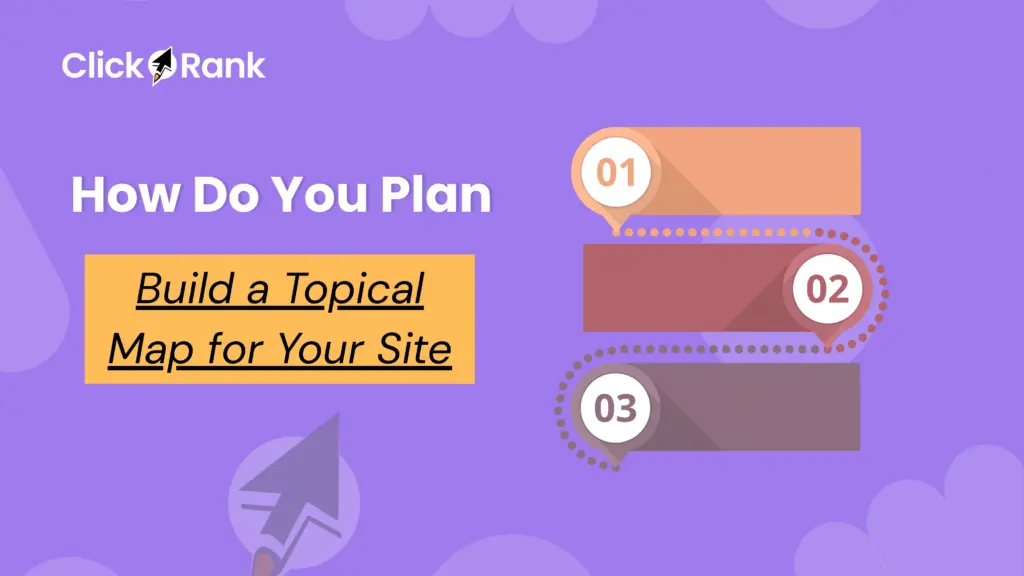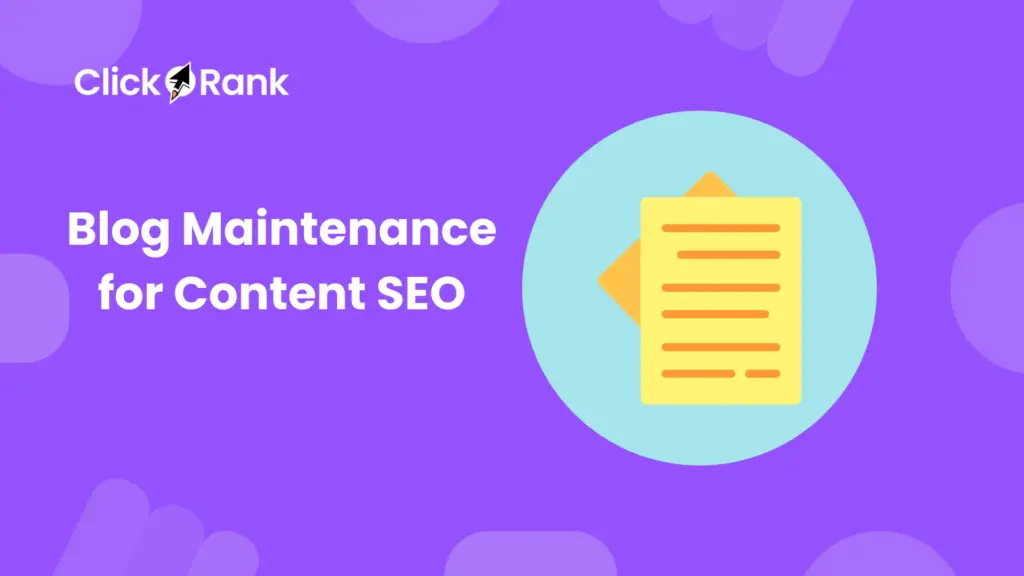Are you tired of spending hours writing great content only to see your rankings stay low? I know the frustration! A slow website or weak page setup is often the hidden problem. Your site structure is probably confusing Google and users.
This is where ClickRank helps. We give you a fast, AI-powered ClickRank Audit connected to Google Search Console. We offer One-Click Fixes for the small things that slow you down.
In this article, I will show you how to use an organized content strategy called a topical map to fix your site’s foundation. This smart organization improves your site architecture and sets you up for easy On-Page Optimization with our tools.
What is a Topical Map and How Does it Help SEO?
I think of a topical map as a complete blueprint for your website. It is not just a simple list of keywords. It is a plan that shows how every piece of content relates to one main subject. This organized approach helps you cover a whole topic cluster completely, which is what Semantic SEO is all about.
How Does it Build Your Website’s Authority for Google (E-E-A-T)?
When you cover a topic fully, you build Domain Authority. Google bots see that you are the expert, and that feels great! This deep coverage shows your Expertise, Authoritativeness, and Trustworthiness (E-E-A-T), which are top Google’s ranking factors. This complete view shows search engines you have the best answer for the user’s need.
How a Topical Map is Different from a Simple Keyword List?
A keyword list is just many single words, which can cause keyword cannibalization. A topical map is about relationships and concepts (Entity-based SEO). We stop competing pages and start connecting them so they work together. Your content is now a strong, helpful network, not just random pages.
What are the 3 Core Parts of a Good Content Structure?
The Pillar Page: The Main Center of Your Topic
The Pillar content is the main, long article that covers a big subject widely. It is the starting point in the Hub-and-spoke model. Think of it as the main street in your town. It gives a broad answer to the most important question about the topic.
The Cluster Content: The Specific Articles That Support the Pillar
The Cluster content is the specific, smaller articles. These pages dig deep into one small part of the pillar topic. They are like the smaller roads that feed traffic to your main street. They show great context and strong detail.
Internal Links: The SEO Wires That Connect All Your Pages
The key to a successful content structure is Internal linking. These are the simple text links that connect the cluster pages back to the pillar page. This connection is vital because it passes Link equity and tells Google exactly how your Information architecture works.
Why Does Google Love the Topical Map Model So Much?
How It Stops Keyword Cannibalization on Your Site?
It is so frustrating when two of your pages fight for the same spot in search! A topical map solves this problem instantly. By clearly defining what each page covers, you stop keyword cannibalization and send a clear signal to Google about which page is the best one to rank.
How It Makes Your Website Easy for Users to Navigate?
A clear site architecture means a great User experience (UX). When users can easily click between related topics, they stay longer. Happy users make Google happy, and you see better Organic traffic! We use this clear structure to automatically generate Smart Recommendations for linking.
The Secret to Passing PageRank (SEO Value) to Key Pages
The Hub-and-spoke model is the secret. Every link from a cluster page to the pillar page gives it a small boost of power. You use your own site’s strength to raise your most important content. This is a powerful form of Content optimization that drives high SERP visibility.
How Do You Plan and Build a Topical Map for Your Site?

Step 1: Find Your Main Pillar Topics Using Simple Keyword Tools
We start with Keyword research. Find the big, popular terms that people search for in your area. Use our ClickRank Audit to see what you already rank for. These big topics will be the foundation of your map.
Step 2: Look at Competitors: What Topics Are They Covering?
I always feel confident when I know what I’m up against. We perform simple Competitor analysis to see their weaknesses and strengths. Where are their gaps? Use this information to cover things they missed. This is your chance to add unique value!
Step 3: Find User Intent: What Does the Searcher Really Want to Know?
Always focus on the user! What is the true search intent behind the question? Is the user looking to buy, or just learn? Map your content to match that need exactly. We show you the intent right in the ClickRank Audit report.
Step 4: Map the Internal Links: Draw the Lines Between Your Content
This is the final, practical step. Draw a clear plan showing how every small cluster page connects to its main pillar. This map becomes the guide for your Internal linking strategy and defines your new URL structure for better On-page SEO.
What Mistakes Should You Avoid When Making a Topical Map?
Problem: Having Content That is Too Shallow and Not Deep Enough
Do not just write a little bit about a big topic. Your cluster content must go deep! If your article is thin, Google won’t trust your Domain authority. Use our platform to check your Content gap analysis and write complete answers.
Problem: Not Linking Your Cluster Content Back to the Pillar Page
The biggest mistake is forgetting the links! If you do not create the Internal linking structure, the topical map fails. We use One-Click Fixes to find and suggest the most powerful links for you automatically.
Problem: Making a Topical Map That is Too Big to Finish
It is easy to get excited and make a map with 100 topics. I get it the feeling of possibility is huge! But start small. Focus on one or two strong topic clusters. Finish them. You build trust and see ranking wins much faster this way.
Does a Topical Map Take a Long Time to Build?
No, the initial plan does not take a long time. The planning, or refinements, is fast when you use data from a tool like ClickRank Audit. The content writing and content optimization takes time, but the map makes that work much faster and clearer for your team.
What is the Difference Between a Topical Map and a Content Calendar?
A topical map is the strategic blueprint—the what and why you write about a topic. A content calendar is the daily plan—the when you write and publish the articles. The map guides the calendar, and the calendar puts the map into action.
Is a Topical Map Only for Big Websites?
No, this content structure is for any website, even small ones. Small sites get a big advantage because a simple map helps them show deep expertise in a niche quickly. This focused content strategy helps you rank much faster against bigger competitors.



Does the meta keywords tag still affect search engine ranking?
The meta keywords tag is an HTML element that historically listed terms relevant to a page’s content. However, Google officially stopped using the meta keywords tag for ranking purposes years ago due to rampant abuse (keyword stuffing). While other search engines might use it marginally, most modern SEO practice considers the tag obsolete. Focus your optimization efforts instead on the title tag and meta description.